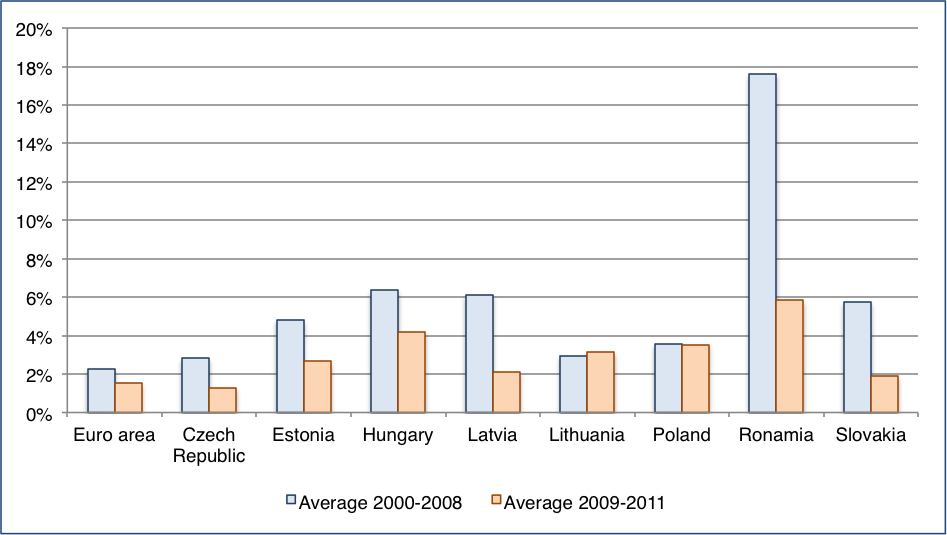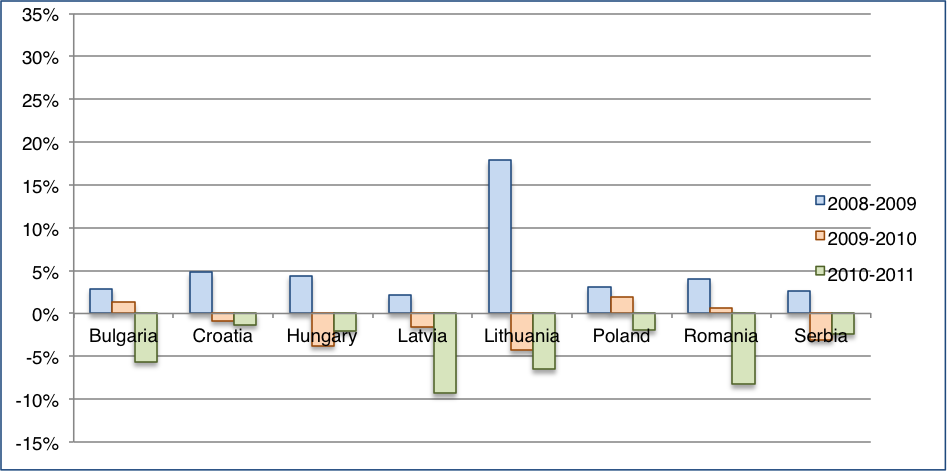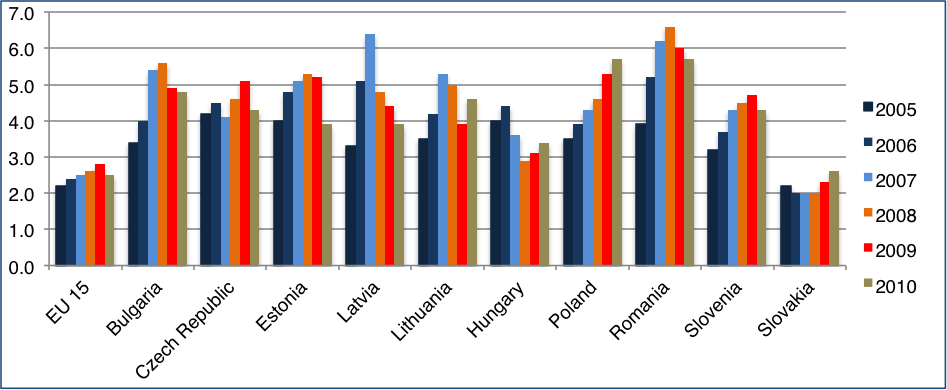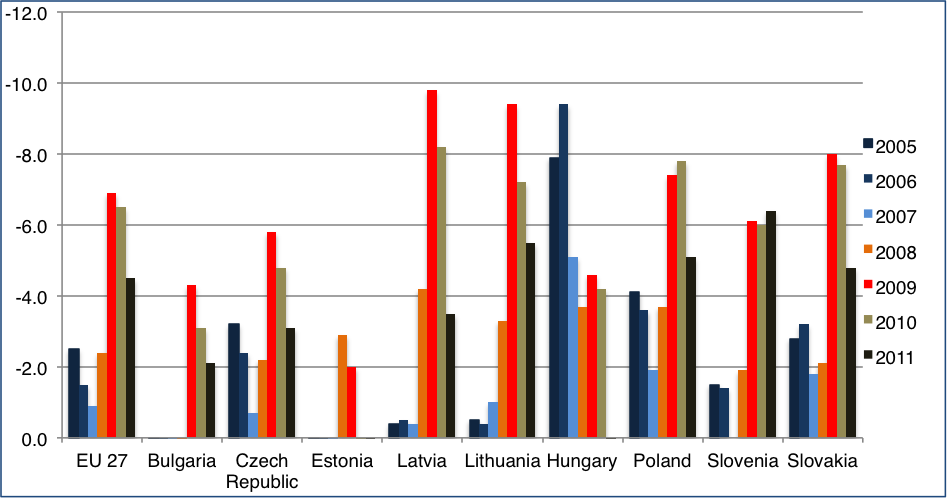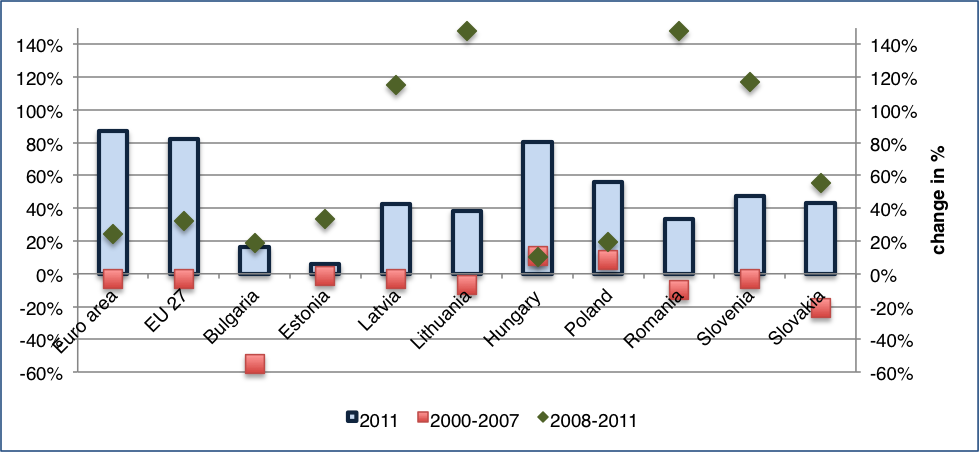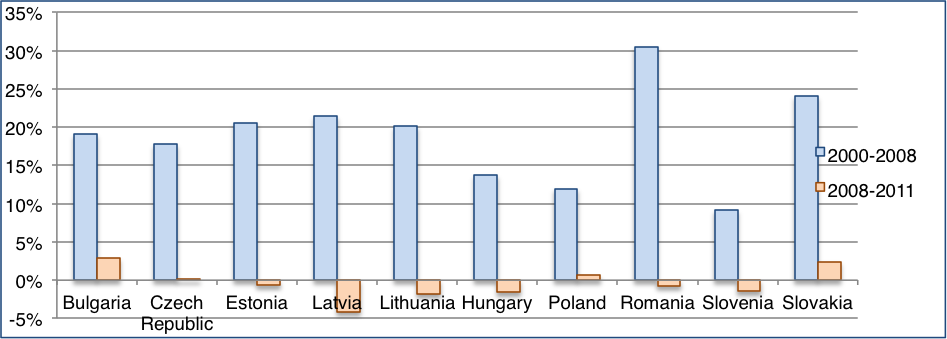The Global Climate Forum (Berlin) has started a series of workshops, which link new economic thinking to practical challenges in economic and environmental policy. The series aims at providing a productive setting to share current research efforts, to provide comments to and inspiration for each other’s work, and to engage in dialogues with relevant stakeholders. By doing so, we strive to establish a community of researchers who set standards for new economic thinking.
A good starting point for these kinds of dialogs was our first workshop, held on June 19th, 2012. More information can be found here.
A second workshop, held on December 11th 2012, discussed the topic “Energy sector transition – German madness or an opportunity for growth?”. This workshop included many inspiring presentations and discussions zooming into the electricity sector (at the German, Dutch, European and international level) and zooming out by assessing cross-sectoral effects as well as macroeconomic impacts. The vast knowledge of the matter among speakers and participants was very impressive and turned this into a promising endeavor.
To summarize the general ideas on green growth and some elements of the workshop discussions:
Climate crisis
Zooming out by looking at the latest climate negotiations in Copenhagen, Rio and Doha, the results are quite disappointing. No game changing decisions have been taken. Despite the strong evidence about climate change leading to large costs of climate adaptation in the distant (and not so distant) future, there is persistent inaction at a global scale.
There are even voices in Germany arguing that the currently proactive German and European approach increases incentives for other countries to free ride and is therefore not the best strategy. Germany should rather invest in adaptation instead of mitigation to increase its power in international climate negotiations. The cost of climate change adaptation would be much lower for Germany and therefore the urgent need for mitigation is not as high. But where will such a strategy take us? If framed like that, it is an example of a Prisoners Dilemma, and would lead to actively and consciously choosing for the inferior equilibrium. We should know better than that.
Financial crisis
On the other hand there is a seemingly never ending debt crisis in the Euro zone, fears of a fiscal cliff in the US, to name the most pressing financial challenges. These short-term and urgent matters are used as an excuse not to take any proactive decisions regarding long-term issues such as climate change. This is nicely picked up by a cartoon in the economist. However, if we reframe the problem, can a green investment strategy especially in southern European countries be a source of new and more sustainable growth and bring Europe back into balance? Can the trend of ever increasing youth unemployment rates and resulting social problems within countries and between the surplus and deficit countries be reversed?
Energy transition
Workshop focus: Zooming into the electricity sector and investigating the macroeconomic effects in Germany and elsewhere.
Germany has decided to phase out nuclear energy and to transform its energy sector into one based on renewable energy. The goal to raise the share of renewables in the energy market to 20% has been achieved. This largely happened due to the feed-in-tariff (guaranteeing a fixed price for renewable energy sold to the transmission system operators over 20 years) and without significant changes to the structure of the energy market. But striving towards an 80% share of renewables by 2050 will require massive changes in technology and infrastructure related to production, storage, grid and consumption, as well as associated transformations of governance structures and the market mechanisms themselves.
The transition is more complex than often thought. As an example, even if the costs for renewable energies reach grid parity (when the cost per kwh of solar power reaches the level of retail prices) this will not be enough to change the entire energy system. A household owning a photovoltaic panel will not use the power at the same time it is produced. Hence, this involves external costs in the form of storage costs, transport costs, additional capacity for flexible production or for demand side control. The supply and demand of electricity needs to be balanced, centralized or decentralized, and this will not come at zero cost.
Other countries are watching Germany with a skeptical eye. But why is nobody talking about the positive external effects of such a strategy? It will reduce CO2 emissions and in terms of climate change mitigation everyone will benefit from it.
Instead, the negative effects on neighboring countries are emphasized a lot lately, for example by the French Centre d’Analyse Strategique saying that the Energiewende comes at a high cost for the consumer and is endangering the equilibrium of the European energy system. However, this would assume that the system is in some kind of equilibrium, which is questionable.
The European energy system as a whole is characterized by opportunistic national decisions, not aimed at finding efficient solutions for the European system as a whole. Hence, all countries need to concentrate on how we can better cooperate on a European level with respect to energy production and consumption.
Can Germany show that the energy transition will become an economic opportunity by 2020?
Can the energy transition be regarded as a potential source of economic growth, where innovation and technological advances increase energy efficiency and general productivity? And more importantly, can it help overcome the reluctance in international climate negotiations on the one hand and serve as a viable and sustainable exit strategy from the negative feedback loop of austerity policies, low investment, low employment and low growth in the Euro zone, on the other?
How can these seemingly unconnected discussions on climate change, the financial crisis and the energy transition be combined? Success of the global climate negotiations are a necessary, but not sufficient condition for a more sustainable future. The discussions need to become broader and include the interrelatedness of the problems. This requires new ideas and new concepts. Can green growth be such a new concept?
Green Growth
Zooming out again, there is much talk about green growth, no growth, de-growth and so forth. Which opportunities lie within a green growth strategy?
The general goal is to reach a superior equilibrium resulting in win-win situations in a social, environmental and economic dimension. We can reach this with a national (or international) commitment combined with proactive policies triggering a (public and private) green investment surge into renewable energies, renewing the built environment and energy efficiency measures in industry and transport at a large scale. A transition to a new growth path entails more than an energy sector transition alone.
Therefore, the German energy transition needs to be put into perspective. It will not succeed by 2020 if carried out without additional measures. Especially important are the effects on other sectors and the resulting impacts on the economy as a whole.
As an example, the increasing price for electricity associated with the energy transition is subject to much criticism within Germany and abroad. But is this the whole story? If the price of one unit of electricity (kWh) rises but if we can use this much more efficiently then the overall energy bill doesn’t necessarily have to rise. Additionally, if a country were to pursue a green growth strategy and largely invest in a transformation process, including renewable energy and energy efficiency in buildings, industry and transportation, this would increase the national income and reduce energy usage and CO2 emissions at the same time. A higher national income will translate into increased turnover of firms and wages of workers, and can more than compensate for increased energy bills.
Lack of attention to this broader picture is a barrier currently suspending any movement towards pursuing a green growth strategy. We cannot zoom into a specific sector and neglect the interactions on cross-sector and on macroeconomic level.
New Economic Thinking
Generally speaking we need to look at the problems at hand in a more holistic way.
There is an urgent need for a professional dialogue about the tools that economists can develop to help design and assess suitable policies. What is needed is more than the standard neoclassical approach. Assessments need to go beyond single equilibrium models and include the possibility of multiple equilibria. Furthermore, we need to investigate the relevant agents, their interactions and the networks they engage in, the set of choices they have and the governance arrangements hindering or promoting a transition. This can be done with agent based models for example.
Furthermore, there is a need to discuss these models with policy makers, to whom they should provide more insight into the dynamics of the problem at hand.
Further information
For a summary of the workshop as well as the workshop presentations click here.
For further interesting contributions, also read Klaus Hasselmann’s latest post.


